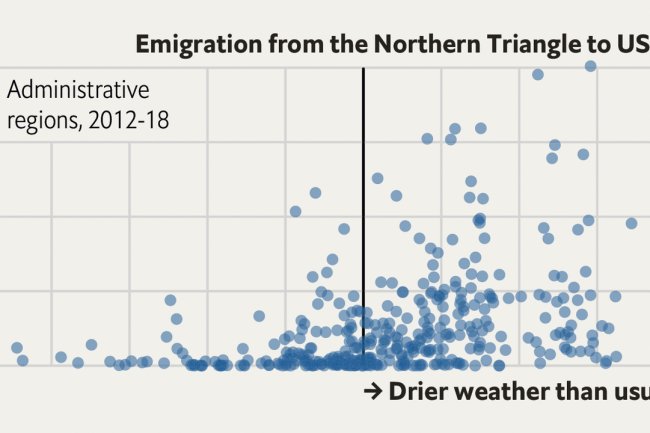At the women’s World Cup, mothers are flourishing
image: Getty ImagesTHE CURRENT generation of American women footballers have already struck one significant blow for equality. In 2022 they forced US Soccer, their governing body, to agree to pay those in the national team as much as their male peers, and to fork out $24m in back pay. At the Women’s World Cup, which began in New Zealand on July 20th, several members of the team want to tackle another of the sport’s shibboleths: motherhood. Until recently a football career and motherhood were considered incompatible, by both governing bodies and the footballers themselves. In 2017 a survey of more than 3,000 female players by FIFPRO, the players’ union, found that only 2% were mothers. Around 45% said that they planned to retire early in order to have a family. It is easy to understand why. Wages for everyone outside elite clubs are low. And back then there were no specific workplace protections—or even any guidelines—covering how clubs or national associations should treat women footba


THE CURRENT generation of American women footballers have already struck one significant blow for equality. In 2022 they forced US Soccer, their governing body, to agree to pay those in the national team as much as their male peers, and to fork out $24m in back pay. At the Women’s World Cup, which began in New Zealand on July 20th, several members of the team want to tackle another of the sport’s shibboleths: motherhood.
Until recently a football career and motherhood were considered incompatible, by both governing bodies and the footballers themselves. In 2017 a survey of more than 3,000 female players by FIFPRO, the players’ union, found that only 2% were mothers. Around 45% said that they planned to retire early in order to have a family. It is easy to understand why. Wages for everyone outside elite clubs are low. And back then there were no specific workplace protections—or even any guidelines—covering how clubs or national associations should treat women footballers who wanted to start families.
That began to change in 2019, when the female players’ associations in Spain and Argentina approached FIFPRO to find out what the rules were. According to FIFPRO’s senior counsel, Alexandra Gómez Bruinewoud, the union had a clear idea of what protections should exist but no documentation. A year of rapid negotiations with FIFA, the sport’s governing body, produced a basic set of rules by which all national associations have to abide. These include offering a minimum of 14 weeks of maternity leave, of which at least eight must be taken after the birth. Teams must provide full pay during pregnancy (regardless of when the mother-to-be stops playing) and at least two-thirds of salary once maternity leave begins. Clubs are also banned from ending a player’s registration, unless she consents to be replaced temporarily.
It did not take long for the rules to be tested. In early 2021 Sara Bjork Gunnarsdottir, an Icelandic midfielder, got pregnant. Her club, Lyon in France, was one of Europe’s most successful. But it had never had a mother on its roster. Ms Bjork said she struck an agreement with the club to spend the second half of her pregnancy at home in Iceland, and resume her playing career once her baby was born. But after two months away she stopped receiving her wages. Lyon told her that under French law it was not obliged to pay her. It backed down only after FIFPRO successfully appealed to FIFA on Ms Bjork’s behalf, in May 2022. That one of the world’s prestigious clubs was either unaware of or dismissive of the regulations shows that football is yet to complete its reckoning with motherhood.
America’s 23-woman squad contains three mums, Crystal Dunn, Julie Ertz and Alex Morgan (pictured), all of whom have spoken openly on the subject. All have brought their children to the tournament. After all, they insist, the football field is no different from any other place of work; family life often runs alongside it. Thirty years ago, two mothers in the American team had to petition US Soccer to pay for a nanny to accompany the squad. Now the federation must pay for flights, accommodation and meals for children aged up to six and their caregivers.
The American mothers, all of whom have over 100 international caps, are able to lobby on behalf of those further down the footballing pyramid. Although the FIFPRO regulations apply to all professional clubs, as Ms Bjork found out compliance can be patchy. The union wants the rules stiffened. It recommends increasing post-birth maternity leave from eight weeks to 12. It also notes that provisions do not apply to adoptive parents or those having children via a surrogate. Last, it wants protection for players whose contracts expire during the maternity period. The financial precarity of most of women’s football means that multi-year contracts are much less common than in the men’s game.
The pace of change may be gradual, but the work of players like Ms Morgan is beginning to normalise motherhood in the game. Few clubs have yet to figure out how best to support a star who becomes a mother—in the way they might, for example, plan for integrating a foreign player or one recovering from a long-term injury. But the visibility and on-field success of the mothers at the World Cup will force football into change, however reluctantly. ■
What's Your Reaction?






















